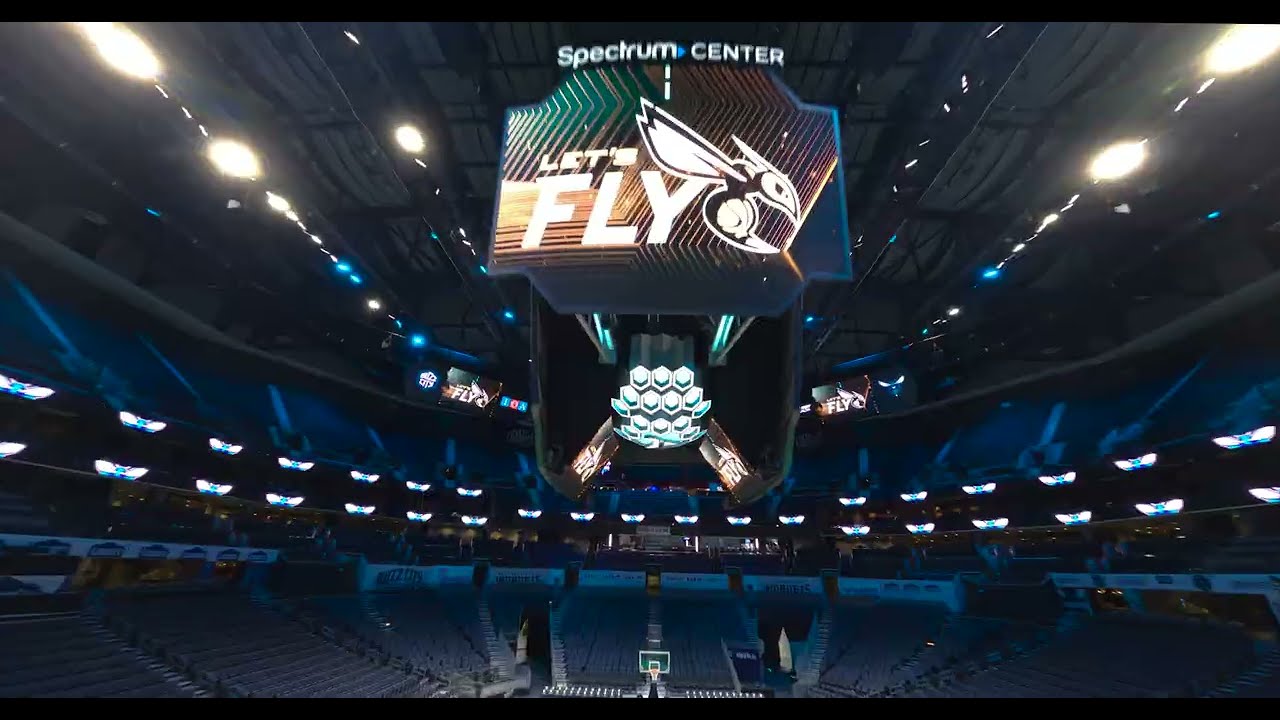Sports Marketing Trends for 2025
Author: Indoor Drone Tours
Posted 10 Dec 2023The future of sports marketing is as dynamic and exhilarating as the sports it celebrates. The possibilities are endless, with the digital video sector in sports marketing experiencing rapid growth year over year. This guide will explore 13 impactful sports marketing trends for 2025, focusing on fan engagement and innovation.
Take Your Sports Coverage Sky-High—Let’s Fly!
Sports Marketing Trends for 2025
These sports marketing trends reshape how brands connect with fans, creating innovative opportunities to enhance engagement and build loyalty.
1. Gamification of Fan Engagement
Gamification is revolutionizing the way fans interact with their favorite teams and leagues. By embedding game mechanics, sports marketers are transforming how audiences engage.
For example, game mechanics such as point scoring, leaderboards, and reward incentives are being incorporated into fan experiences. They are turning passive viewing into an active and competitive experience.
Fantasy leagues , team-branded mobile apps , and NFT-based rewards are keeping fans involved before, during, and after the game. According to Deloitte, nearly 80% of fans are more likely to follow and stay loyal to a team that offers an interactive year-round experience.
Fans who participate in gamified campaigns are more likely to make repeat purchases. They are also more likely to attend live events, highlighting a strong connection between interactivity and loyalty.
2. Rise of Phygital Sports
The fusion of physical and digital, or “ phygital “, experiences redefines sports consumption. Whether attending a game in person or interacting via AR filters, fans now expect hybrid engagement options. They can also join virtual tailgate parties, using tools like Tailgreeter that are hosted by influencers.
The NBA’s All-Star Weekend has become a proving ground for this model, incorporating holographic player intros and live digital fan voting. PwC also reports that many sports executives believe that integrating digital overlays and physical attendance will be a core revenue driver within the next couple of years.
Notably, brands that fail to embrace phygital activations risk falling behind as fan expectations evolve.
3. Real-Time Contextual Marketing
Real-time marketing is no longer optional. It’s a necessity.
With access to advanced AI and real-time analytics, brands can now tailor messaging based on what’s happening on the field, in the stands, or even on social media. Contextual marketing allows brands to push relevant product recommendations or interactive polls. They can also offer in-game discount codes based on player stats or pivotal moments during a game.
IBM Watson’s AI has already demonstrated the power of this approach in events like Wimbledon, where AI-generated summaries and more resulted in a higher engagement rate . This hyper-personalization deepens fan involvement while maximizing brand impact.
4. Expansion of Women’s Sports
Forget women’s sports being a niche. They’re now a movement.
The momentum behind women’s leagues and competitions forces brands to reevaluate their sports marketing portfolios. The 2023 FIFA Women’s World Cup broke viewership records with 3 billion global viewers and was the first ever to break even, generating USD $570m in revenue.
Not to mention, brands like Adidas and Visa are creating dedicated sponsorship pipelines and storytelling platforms focused on female athletes. According to Nielsen, 84% of sports fans worldwide are interested in women’s sports.
Female athletes also outperform male athletes in brand trust metrics. This makes them especially valuable for purpose-driven campaigns.
5. Drone Videos
Drone cinematography has transformed the visual language of sports. FPV drones enhance how sports are broadcast and consumed, offering cinematic, bird’s-eye views and dynamic chase sequences.
Networks like Fox Sports regularly integrate drone footage into live game coverage, which has led to more immersive storytelling and increased viewer retention. Moreover, in collegiate sports, drone use can help smaller schools attract national attention through high-quality, shareable video.
Drone content also opens new opportunities for sponsor integration, from branded drone marketing content to real-time product drops. That’s why we at Indoor Drone Tours are happy to facilitate these new partnerships. Our drone videography and photography services can help companies reach a wider audience.
Take Your Sports Coverage Sky-High—Let’s Fly!
Some of the potential applications of drone technology in sports include:
- Aerial footage for improved analysis : Coaches and players can use drone footage to analyze their performance from a different perspective, allowing them to identify weaknesses and improve strategy.
- Virtual reality experiences : With advancements in virtual reality technology, fans can now experience live games from the comfort of their homes through VR headsets paired with drone footage.
- Fan engagement: Drones can provide exciting content for social media platforms, engaging fans and increasing team visibility.
- Marketing opportunities: Sponsors can use drone technology to showcase their products during live games, providing additional revenue for teams.
Ready for Next‑Level Sports Footage? Let’s Fly!
6. Purpose-Driven Marketing
The demand for values-aligned messaging continues to grow, especially among younger audiences. Today’s sports fans expect their teams and sponsors to stand for something meaningful.
Whether it’s racial justice, gender equity, or environmental sustainability, purpose-driven marketing is no longer a differentiator; it’s a requirement.
Campaigns like Nike’s “ You Can’t Stop Us ” and the WNBA’s “ Social Justice Council ” have proven that aligning with social causes doesn’t hurt business; it boosts it. Edelman’s Trust Barometer reports that consumers make purchasing decisions based on a brand’s social stance, especially Gen Z.
7. Influencer and Athlete-Led Content
Thanks to the explosive growth of platforms like Instagram, TikTok, and YouTube, athletes have become media entities in their own right. Many are launching personal brands, vlogs, and podcasts, allowing fans unprecedented access to their lives beyond the field.
Brands embrace this by forming content partnerships that go far beyond traditional endorsements. These collaborations often include co-branded merchandise, interactive livestreams, and exclusive content drops.
Influencer Marketing Hub notes that athlete-led campaigns can yield engagement rates higher than traditional display ads. Micro-influencers, such as college athletes leveraging NIL deals, also represent a scalable opportunity for local and regional marketing.
8. Shoppable Live Streams
The merging of commerce and entertainment is transforming live sports into fully interactive retail environments. During shoppable live streams, fans can purchase jerseys, footwear, or even limited-edition digital collectibles while watching the game.
Platforms like Amazon Live, YouTube Live, and even Twitch are experimenting with sports formats. They enable real-time transactions without disrupting the viewing experience.
Integrating athlete endorsements or commentary into these streams adds a layer of authenticity that traditional ecommerce lacks.
9. Virtual and Augmented Reality Experiences
AR and VR technologies are moving from novelty to necessity in the sports world. Fans are no longer limited to watching the game; they can step inside it.
VR headsets offer 360-degree views from premium seating. Similarly, AR glasses enhance in-person experiences with live stats, trivia, and social media feeds.
Teams like the Dallas Cowboys are rolling out VR fan zones that allow global supporters to experience the stadium environment.
The Future of Sports Marketing Trends 2025: Final Thoughts
In 2025, sports marketing is evolving into a deeply immersive, tech-forward, and purpose-driven field. Fan expectations are rising, and brands must respond with strategies that are not only innovative but also inclusive, interactive, and ethically grounded.
Engaging and captivating drone videography is the first step towards crafting a more personal and intimate fan experience in sports marketing.


